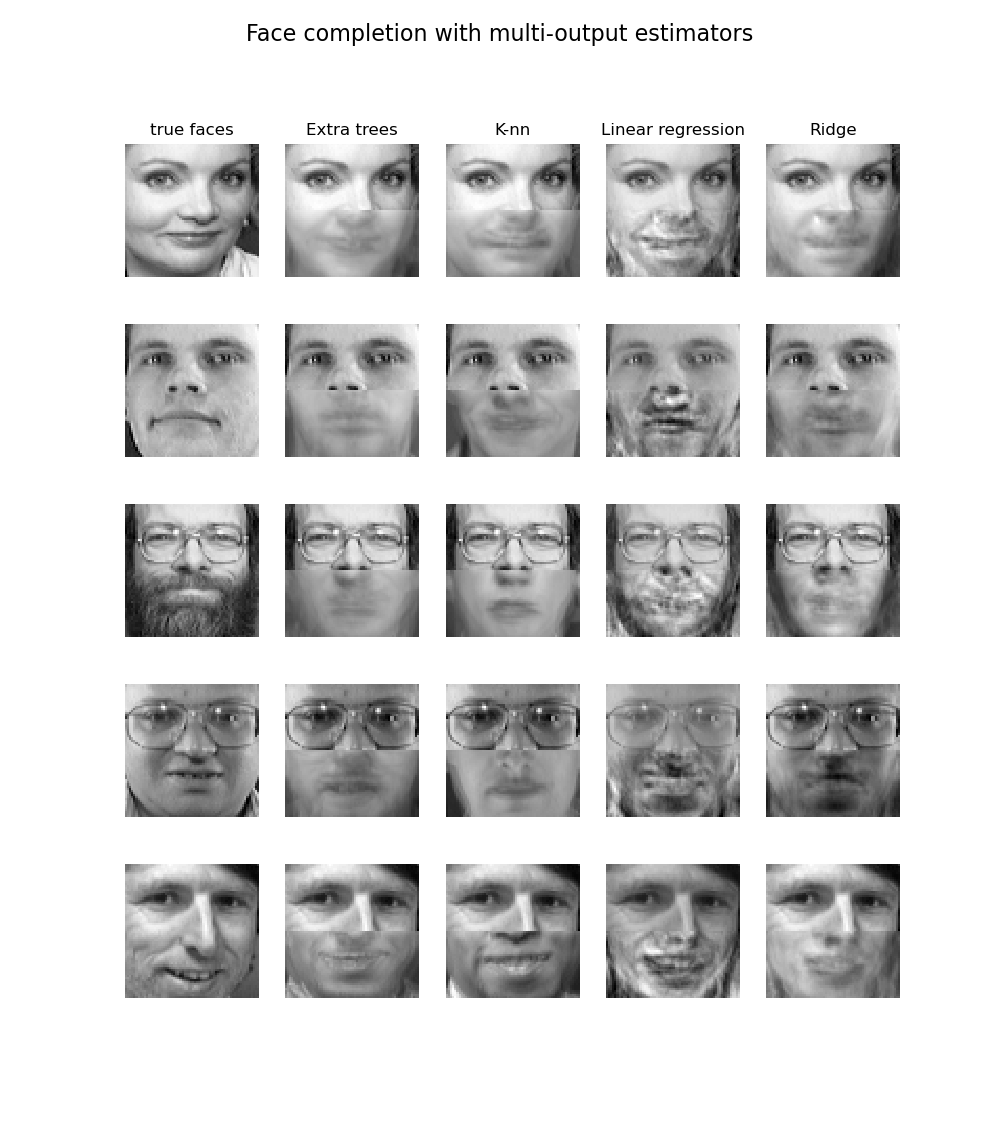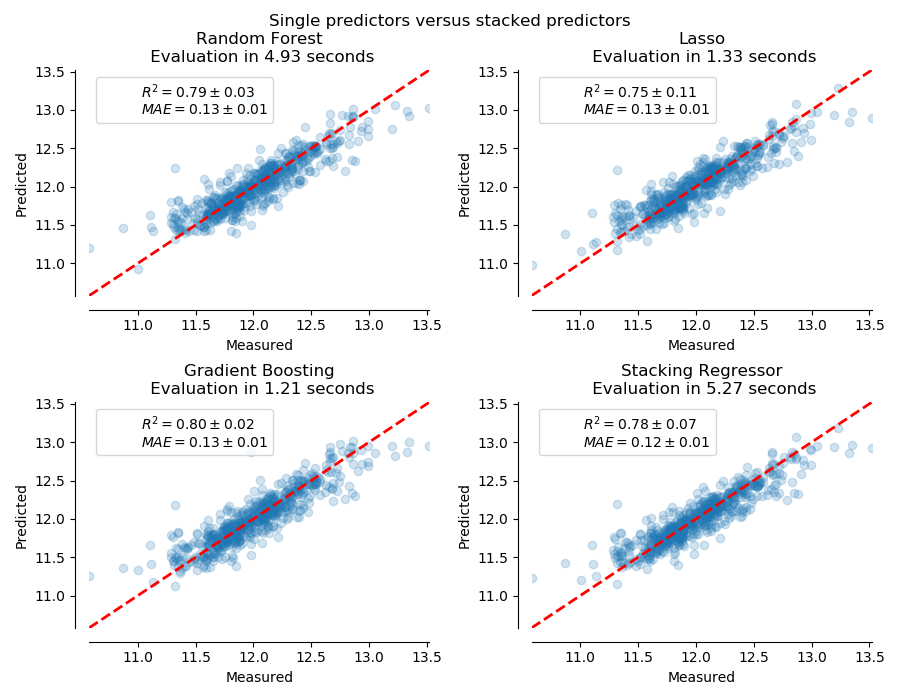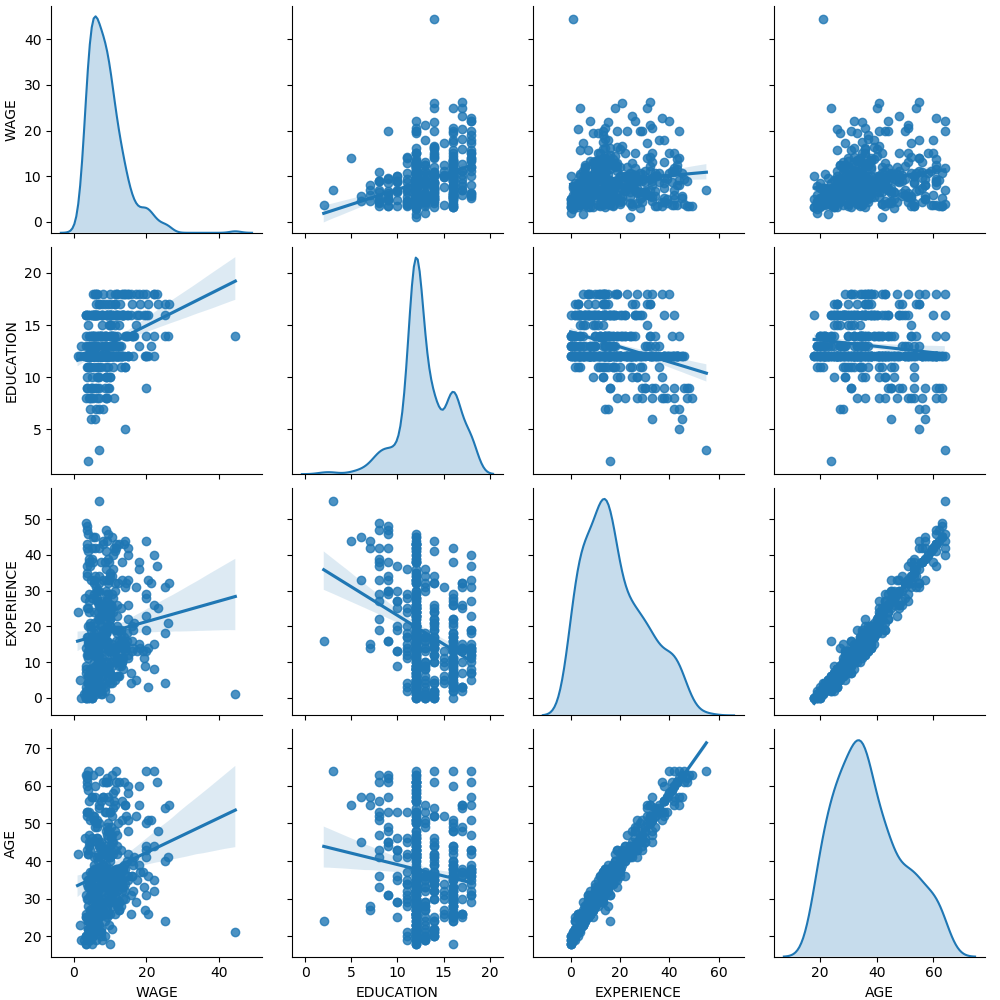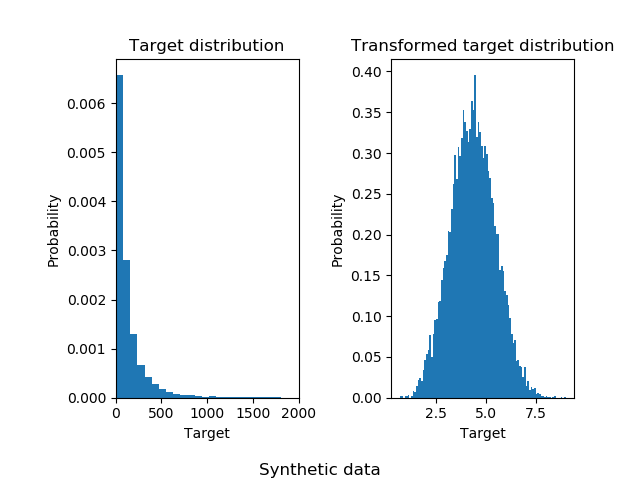sklearn.linear_model.RidgeCV¶
class sklearn.linear_model.RidgeCV(alphas=(0.1, 1.0, 10.0), *, fit_intercept=True, normalize=False, scoring=None, cv=None, gcv_mode=None, store_cv_values=False)
内置交叉验证的Ridge分类器。
有关交叉验证估算器,请参阅词汇表。
默认情况下,它执行泛化的交叉验证,这是一种有效的“留一法”交叉验证的形式。
在用户指南中阅读更多内容。
| 参数 | 说明 |
|---|---|
| alphas | ndarray of shape (n_alphas,), default=(0.1, 1.0, 10.0) 要尝试的Alpha值数组。正则强度,必须为正浮点数。正则化改善了问题的状况,并减少了估计的方差。较大的值表示更强的正则化。在其他线性模型中,Alpha对应于 1 / (2C),例如 LogisticRegression或sklearn.svm.LinearSVC,如果使用通用交叉验证,则alpha必须为正。 |
| fit_intercept | bool, default=True 是否计算此模型的截距。如果设置为false,则在计算中将不使用截距(即数据应已经中心化)。 |
| normalize | bool, default=Falsefit_intercept设置为False 时,将忽略此参数。如果为True,则在回归之前通过减去均值并除以l2-范数来对回归变量X进行归一化。如果你希望标准化,请先使用 sklearn.preprocessing.StandardScaler,然后调用fit 估算器并设置normalize=False。 |
| scoring | string, callable, default=None 字符串(请参阅模型评估文档)或带 scorer(estimator, X, y)签名的评分器可调用对象 。 |
| cv | int, cross-validation generator or an iterable, default=None 确定交叉验证拆分策略。可能输入是: - None,使用有效的“留一法”交叉验证(也称为通用交叉验证) - 整数,用于指定折叠数。 - CV分割器, - 可迭代生成(分割训练、测试)索引数组。 对于整数或None,如果 y是二分类或多分类,则使用sklearn.model_selection.StratifiedKFold,否则使用sklearn.model_selection.KFold。有关可在此处使用的各种交叉验证策略,请参阅用户指南。 |
| gcv_mode | {‘auto’, ‘svd’, eigen’}, default=’auto’ 指示执行通用交叉验证时使用哪种策略的标志。选项有: 'auto' : use 'svd' if n_samples > n_features, otherwise use 'eigen''svd' : force use of singular value decomposition of X when X is dense, eigenvalue decomposition of X^T.X when X is sparse.'eigen' : force computation via eigendecomposition of X.X^T<br />“auto”模式是默认模式,用于根据训练数据的形状选择两者中更合适的选项。 |
| store_cv_values | bool, default=False 是否将与每个alpha对应的交叉验证值存储在 cv_values_属性中(请参见下文)。该参数仅与cv=None(即使用通用交叉验证)兼容。 |
| 属性 | 说明 |
|---|---|
| cv_values_ | ndarray of shape (n_samples, n_alphas) or shape (n_samples, n_targets, n_alphas), optional 每个alpha的交叉验证值(当 store_cv_values=True和 cv=None)。fit()被调用之后,此属性将包含均方误差(默认)或 {loss,score}_func函数(如果在构造函数中提供)的值。 |
| coef_ | ndarray of shape (1, n_features) or (n_classes, n_features) 决策函数中特征的系数。 |
| intercept_ | float or ndarray of shape (n_targets,) 决策函数中的截距。如果设置 fit_intercept = False,则截距为0.0 。 |
| alpha_ | float 估计的正则化参数。 |
| best_score_ | float 具有最佳alpha值的基计器得分。 |
另见
岭回归
岭分类器
带有内置交叉验证的Ridge分类器
示例
>>> from sklearn.datasets import load_diabetes
>>> from sklearn.linear_model import RidgeCV
>>> X, y = load_diabetes(return_X_y=True)
>>> clf = RidgeCV(alphas=[1e-3, 1e-2, 1e-1, 1]).fit(X, y)
>>> clf.score(X, y)
0.5166...
方法
| 方法 | 说明 |
|---|---|
fit(X, y[, sample_weight]) |
拟合带有交叉验证的Ridge回归模型。 |
get_params([deep]) |
获取此估计器的参数。 |
predict(X) |
使用线性模型进行预测。 |
score(X, y[, sample_weight]) |
返回预测的确定系数R ^ 2。 |
set_params(**params) |
设置此估计器的参数。 |
__init__(alphas=(0.1, 1.0, 10.0), *, fit_intercept=True, normalize=False, scoring=None, cv=None, gcv_mode=None, store_cv_values=False)
初始化self, 请参阅help(type(self))以获得准确的说明。
fit(X,y,sample_weight = None )
[源码]
拟合带有交叉验证的Ridge回归模型。
| 参数 | 说明 |
|---|---|
| X | ndarray of shape (n_samples, n_features) 训练数据。使用GCV时,如有必要,将其强制转换为float64。 |
| y | ndarray of shape (n_samples,) 如有必要,将强制转换为X的类型。 |
| sample_weight | float or ndarray of shape (n_samples,), default=None 每个样本的权重,如果使用浮点数,每个样品的权重都相同。 |
| 返回值 | 说明 |
|---|---|
| self | object |
注
当提供样本权重时,所选的超参数可能取决于我们是使用广义交叉验证(cv=None或cv='auto')还是其他形式的交叉验证,因为只有广义交叉验证在计算验证分数时才考虑样本权重。
get_params(deep=True)
[源码]
获取此估计器的参数。
| 参数 | 说明 |
|---|---|
| deep | bool, default=True 如果为True,返回此估计器和所包含子对象的参数。 |
| 返回值 | 说明 |
|---|---|
| params | mapping of string to any 参数名称映射到其值。 |
predict(X)
[源码]
预测X中样本的类别标签。
| 参数 | 说明 |
|---|---|
| X | array_like or sparse matrix, shape (n_samples, n_features) 样本数据 |
| 返回值 | 说明 |
|---|---|
| C | array, shape (n_samples,) 每个样本的预测类别标签。 |
score(X, y, sample_weight=None)
[源码]
返回预测的确定系数R ^ 2。
系数R ^ 2定义为(1- u / v),其中u是残差平方和((y_true-y_pred)** 2).sum(),而v是总平方和((y_true- y_true.mean())** 2).sum()。可能的最高得分为1.0,并且也可能为负(因为该模型可能会更差)。一个常数模型总是预测y的期望值,而不考虑输入特征,得到的R^2得分为0.0。
| 参数 | 说明 |
|---|---|
| X | array-like of shape (n_samples, n_features) 测试样本。对于某些估计量,这可以是预先计算的内核矩阵或通用对象列表,形状为(n_samples,n_samples_fitted),其中n_samples_fitted是用于拟合估计器的样本数。 |
| y | array-like of shape (n_samples,) or (n_samples, n_outputs) X的真实值。 |
| sample_weight | array-like of shape (n_samples,), default=None 样本权重。 |
| 返回值 | 说明 |
|---|---|
| score | float 预测值与真实值的R^2。 |
注
调用回归器中的score时使用的R2分数,multioutput='uniform_average'从0.23版开始使用 ,与r2_score默认值保持一致。这会影响多输出回归的score方法( MultiOutputRegressor除外)。
set_params(**params)
[源码]
设置此估计器的参数。
该方法适用于简单的估计器以及嵌套对象(例如管道)。后者具有形式为 <component>__<parameter>的参数,这样就可以更新嵌套对象的每个组件。
| 参数 | 说明 |
|---|---|
| **params | dict 估计器参数。 |
| 返回值 | 说明 |
|---|---|
| self | object 估计器实例。 |








